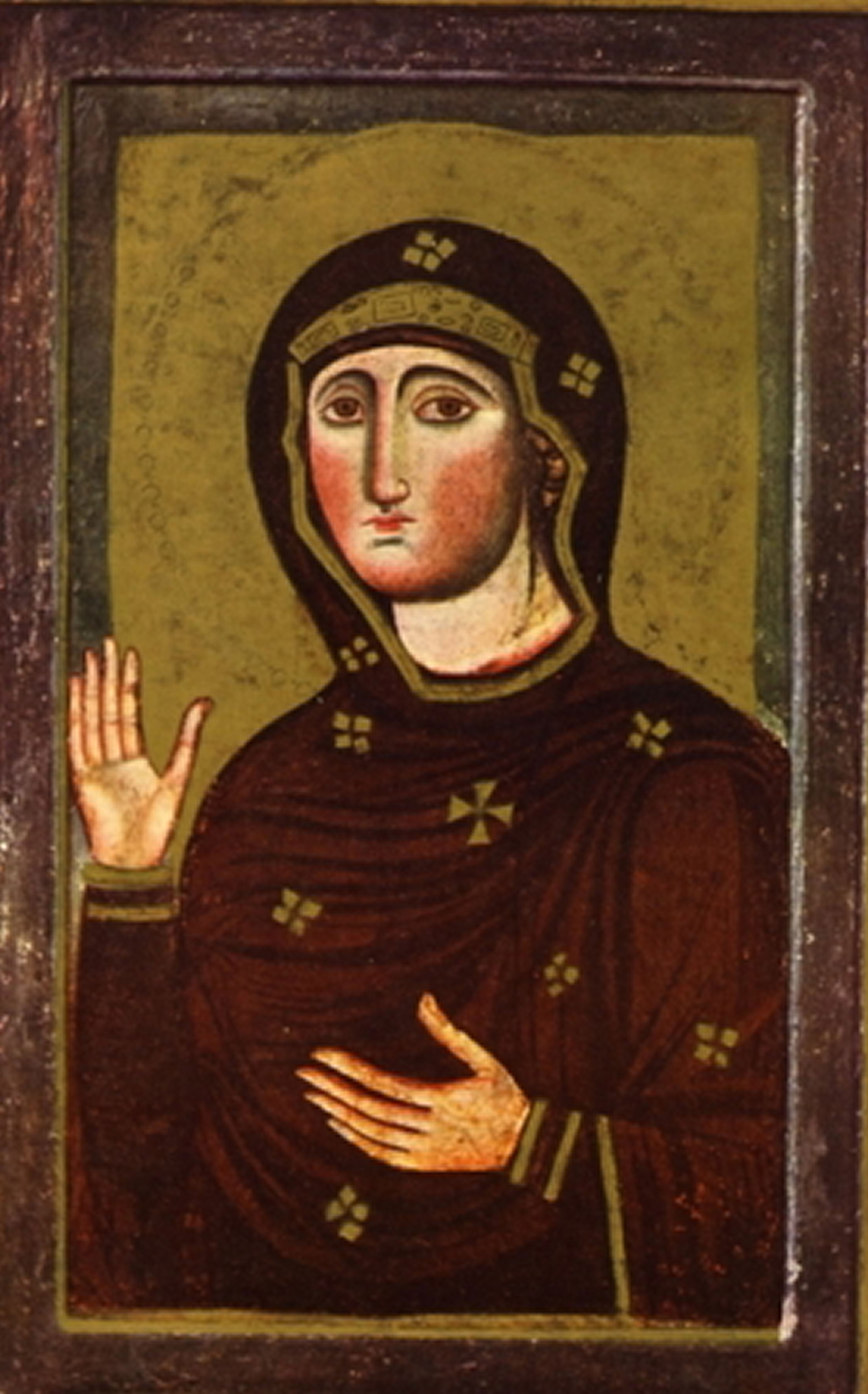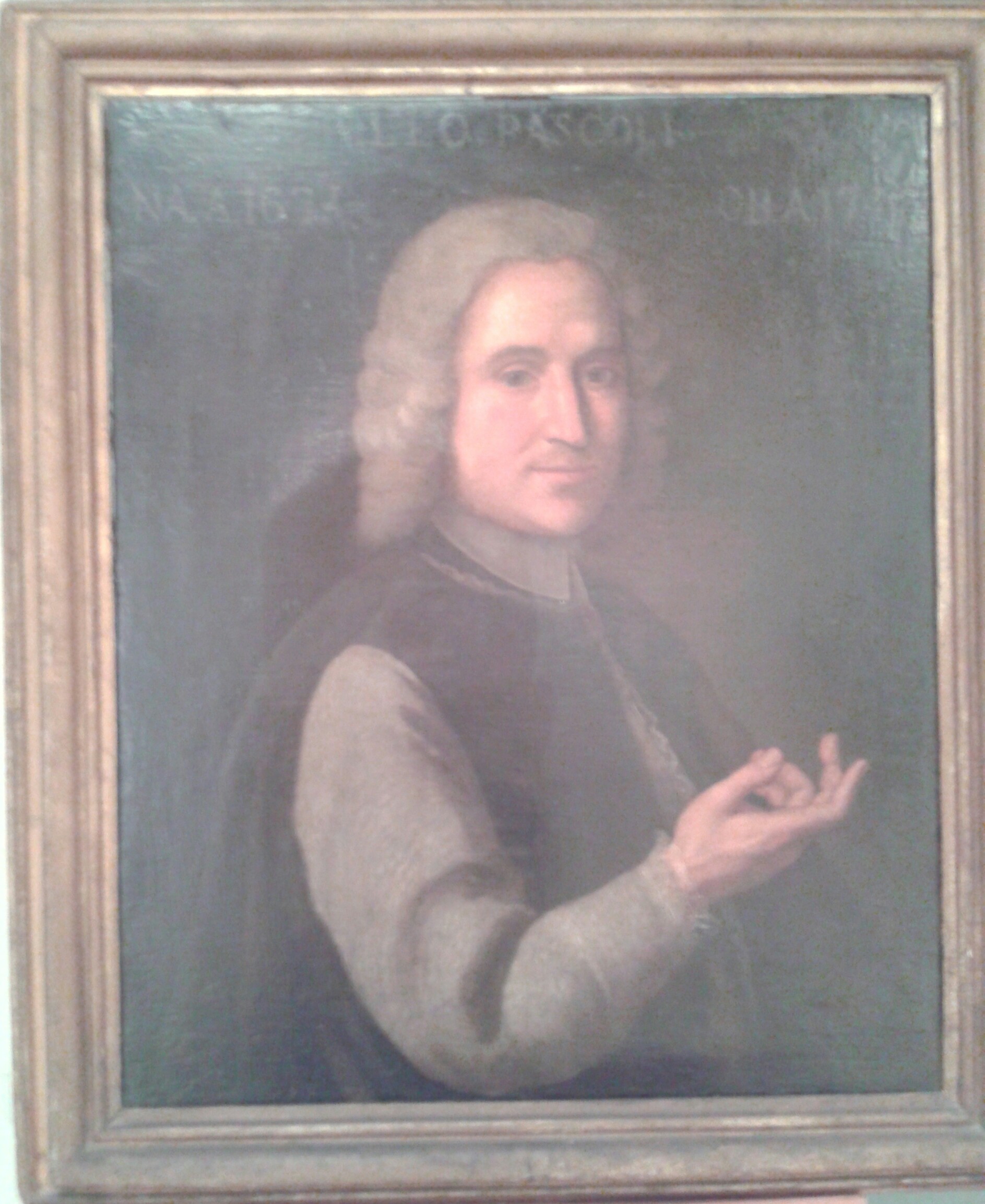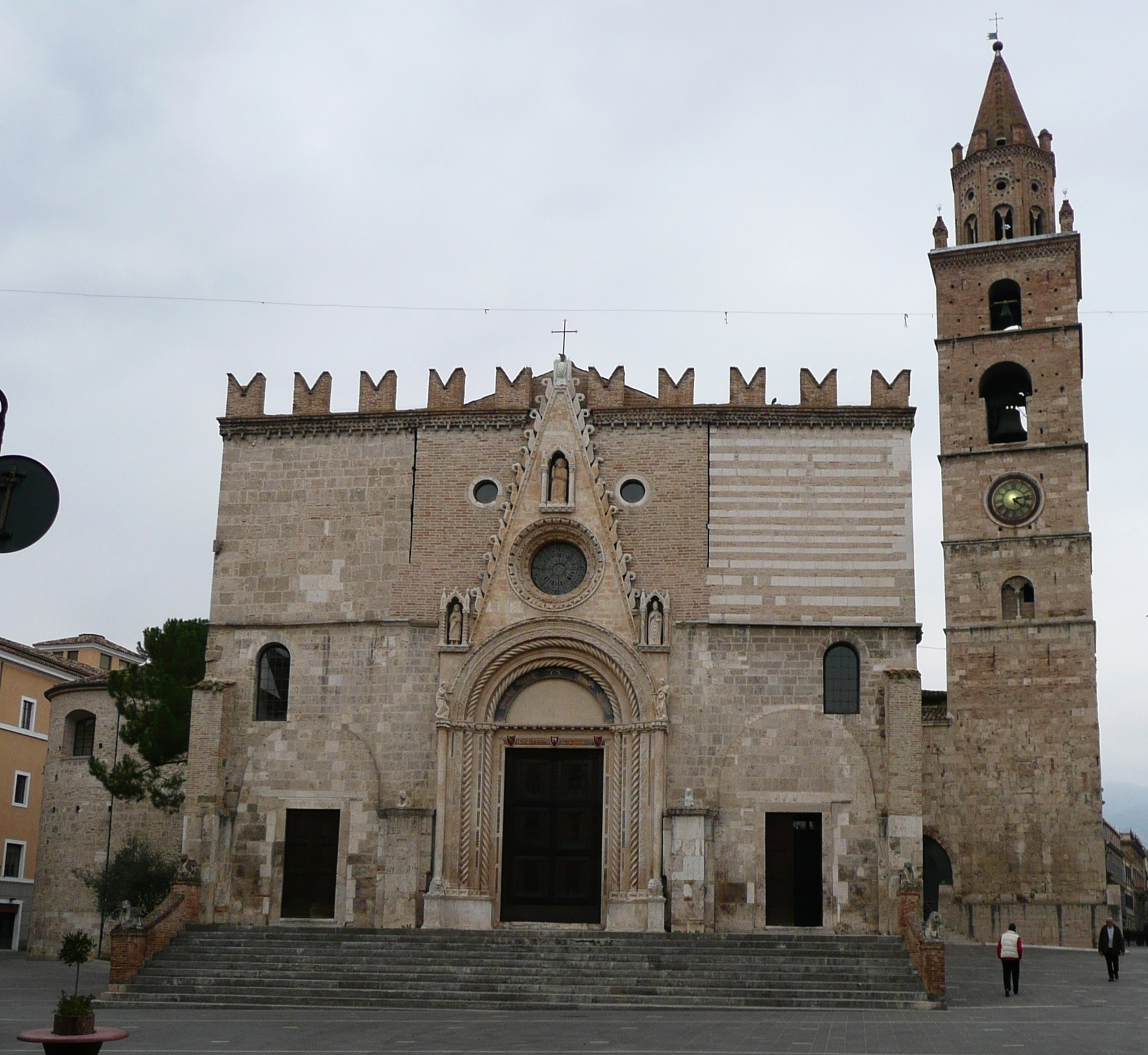|
Giovanni Battista Buonocore
Giovanni Battista Buonocore (1643 in Campli, Province of Teramo, Abruzzo – May 22, 1699 in Rome) was an Italian painter of the Baroque period. He became Rector (1679), then ''Principe'' (1698) (replacing the Maratta) of the Accademia di San Luca of Rome. Biography While born in Abruzzo, he first trained with Mola in Lombardy, then traveled to Parma, Venice, Ferrara, Cento, Florence, and Bologna, before settling in Rome. He painted an altar-piece for the Chiesa degli Orfanelli at Rome. He is known there for a canvas of ''Martyrdom of San Gaetano'' which was once in the Villa Medici. He also painted a ''San Andrea Avellino'', ''Massacre of the Innocents'', ''St Anthony of Padua with Virgin and Child'', and a ''Deposition''. He painted a Crucifixion for the Church of Santa Maria in Aracoeli. He also painted some frescoes in the tribune of the church of San Carlo al Corso Sant'Ambrogio e Carlo al Corso (usually known simply as ''San Carlo al Corso'') is a basilica church in ... [...More Info...] [...Related Items...] OR: [Wikipedia] [Google] [Baidu] |
Campli
Campli ( Abruzzese: ') is a town and ''comune'' in the province of Teramo, in the Abruzzo region of central Italy. It is located in the natural park known as the Gran Sasso e Monti della Laga National Park. Geography The towns of Bellante, Civitella del Tronto, Sant'Omero, Teramo, Torricella Sicura, Valle Castellana are nearby. History During the 14th century, the composer Nicolaus Ricii de Nucella Campli was born presumably in or near the town. The town was captured by the French under François de Guise in 1557 during his failed campaign against the Spanish in the Kingdom of Naples. Festivals and events Every year since 1964 in the month of August, there is a celebration that goes by the name of ''Sagra della porchetta italica'' (Feast of Italian Pork). It is considered to be the first such event established in the Region of Abruzzo and one of the earliest organized in all of Italy. One highlight of this festival is a pork sandwich cookoff. The festival was founde ... [...More Info...] [...Related Items...] OR: [Wikipedia] [Google] [Baidu] |
Santa Maria In Aracoeli
The Basilica of St. Mary of the Altar of Heaven ( la, Basilica Sanctae Mariae de Ara coeli in Capitolio, it, Basilica di Santa Maria in Ara coeli al Campidoglio) is a titular basilica in Rome, located on the highest summit of the Campidoglio. It is still the designated Church of the city council of Rome, which uses the ancient title of ''Senatus Populusque Romanus''. The present Cardinal Priest of the ''Titulus Sanctae Mariae de Aracoeli'' is Salvatore De Giorgi. The shrine is known for housing relics belonging to Saint Helena, mother of Emperor Constantine, various minor relics from the Holy Sepulchre, both the canonically crowned images of ''Nostra Signora di Mano di Oro di Aracoeli'' (1636) on the high altar and the Santo Bambino of Aracoeli (1897). History Originally the church was named ''Sancta Maria in Capitolio'', since it was sited on the Capitoline Hill (Campidoglio, in Italian) of Ancient Rome; by the 14th century it had been renamed. A medieval legend included ... [...More Info...] [...Related Items...] OR: [Wikipedia] [Google] [Baidu] |
17th-century Italian Painters
The 17th century lasted from January 1, 1601 ( MDCI), to December 31, 1700 ( MDCC). It falls into the early modern period of Europe and in that continent (whose impact on the world was increasing) was characterized by the Baroque cultural movement, the latter part of the Spanish Golden Age, the Dutch Golden Age, the French ''Grand Siècle'' dominated by Louis XIV, the Scientific Revolution, the world's first public company and megacorporation known as the Dutch East India Company, and according to some historians, the General Crisis. From the mid-17th century, European politics were increasingly dominated by the Kingdom of France of Louis XIV, where royal power was solidified domestically in the civil war of the Fronde. The semi-feudal territorial French nobility was weakened and subjugated to the power of an absolute monarchy through the reinvention of the Palace of Versailles from a hunting lodge to a gilded prison, in which a greatly expanded royal court could be more easily ... [...More Info...] [...Related Items...] OR: [Wikipedia] [Google] [Baidu] |
People From Campli
A person ( : people) is a being that has certain capacities or attributes such as reason, morality, consciousness or self-consciousness, and being a part of a culturally established form of social relations such as kinship, ownership of property, or legal responsibility. The defining features of personhood and, consequently, what makes a person count as a person, differ widely among cultures and contexts. In addition to the question of personhood, of what makes a being count as a person to begin with, there are further questions about personal identity and self: both about what makes any particular person that particular person instead of another, and about what makes a person at one time the same person as they were or will be at another time despite any intervening changes. The plural form "people" is often used to refer to an entire nation or ethnic group (as in "a people"), and this was the original meaning of the word; it subsequently acquired its use as a plural form of per ... [...More Info...] [...Related Items...] OR: [Wikipedia] [Google] [Baidu] |
1699 Deaths
Events January–March * January 5 – A violent Java earthquake damages the city of Batavia on the Indonesian island of Java, killing at least 28 people * January 20 – The Parliament of England (under Tory dominance) limits the size of the country's standing army to 7,000 'native born' men; hence, King William III's Dutch Blue Guards cannot serve in the line. By an Act of February 1, it also requires disbandment of foreign troops in Ireland. * January 26 – The Republic of Venice, Polish–Lithuanian Commonwealth and Holy Roman Empire sign the Treaty of Karlowitz with the Ottoman Empire, marking an end to the major phase of the Ottoman–Habsburg wars. The treaty marks a major geopolitical shift, as the Ottoman Empire subsequently abandons its expansionism and adopts a defensive posture while the Habsburg monarchy expands its influence. * February 3 – The first paper money in America is issued by the colony of Massachusetts, to pay its soldiers fighting against Qu ... [...More Info...] [...Related Items...] OR: [Wikipedia] [Google] [Baidu] |
1643 Births
Events January–March * January 21 – Abel Tasman sights the island of Tonga. * February 6 – Abel Tasman sights the Fiji Islands. * March 13 – First English Civil War: First Battle of Middlewich – Roundheads ( Parliamentarians) rout the Cavaliers (Royalist supporters of King Charles I) at Middlewich in Cheshire. * March 18 – Irish Confederate Wars: Battle of New Ross – English troops defeat those of Confederate Ireland. April–June * April 1 – Åmål, Sweden, is granted its city charter. * April 28 – Francisco de Lucena, former Portuguese Secretary of State, is beheaded after being convicted of treason. * May 14 – Louis XIV succeeds his father Louis XIII as King of France at age 4. His rule will last until his death at age 77 in 1715, a total of 72 years, which will be the longest reign of any European monarch in recorded history. * May 19 ** Thirty Years' War: Battle of Rocroi: The French defeat the Spa ... [...More Info...] [...Related Items...] OR: [Wikipedia] [Google] [Baidu] |
Leone Pascoli
Lione Pascoli (1674 in Perugia – 1744 in Rome) was an Italian abbot, art historian, collector, and economist. At 16 years of age, he moved to Rome. He wrote biographies of contemporary artists and those of Perugia. The former, published in Rome in 1730, is a source of importance for the lives and output of late-baroque artists of Italy. In economic theory, Lione promulgated a mix of protectionism and mercantilism, proposing the abolition of internal tariffs on agricultural products, and ban on the export of raw commodities and importationation of manufactured goods. Lione was influenced by French economists such as Pierre Le Pesant. His work influenced later reforms implemented by |
Girolamo De Rossi
Girolamo is an Italian variant of the name Hieronymus. Its English equivalent is Jerome. It may refer to: * Girolamo Cardano (1501–1576), Italian Renaissance mathematician, physician, astrologer and gambler * Girolamo Cassar (c. 1520 – after 1592), Maltese architect and military engineer * Girolamo da Cremona (fl. 1451–1483), Italian Renaissance painter * Girolamo della Volpaia, Italian clock maker * Girolamo Fracastoro (1478–1553), Italian physician, scholar, poet and atomist * Girolamo Frescobaldi (1583–1643), Italian musician * Girolamo Maiorica (c. 1591–1656), Italian Jesuit missionary to Vietnam * Girolamo Luxardo (1821–), Italian liqueur factory * Girolamo Masci (1227–1292), Pope Nicholas IV (1288–1292) * Girolamo Palermo, American mobster * Girolamo Porro (c. 1520 – after 1604), Italian engraver * Girolamo Riario (1443–1488), Lord of Imola and Forlì * Girolamo Romani (1485–1566), Italian High Renaissance painter * Girolamo Savonarola (1452� ... [...More Info...] [...Related Items...] OR: [Wikipedia] [Google] [Baidu] |
San Carlo Al Corso
Sant'Ambrogio e Carlo al Corso (usually known simply as ''San Carlo al Corso'') is a basilica church in Rome, Italy, facing onto the central part of the Via del Corso. The apse of the church faces across the street, the Mausoleum of Augustus on Via di Ripetta. This church is dedicated to Saint Ambrose and Saint Charles Borromeo, the patron saints of Milan. It is one of at least three churches in Rome dedicated to Borromeo, others including San Carlo ai Catinari and San Carlo alle Quattro Fontane. Construction The church of the Saints Ambrogio and Carlo al Corso is the national church of the Lombards, to whom in 1471 Pope Sixtus IV gave, in recognition of their valuable construction work of the Sistine Chapel, the small church of S. Niccolò del Tufo, which was first restored and then dedicated to S. Ambrogio, the patron saint of Milan. Its construction was begun in honour of the canonization of St. Charles Borromeo in 1610, under the direction of Onorio Longhi and, after hi ... [...More Info...] [...Related Items...] OR: [Wikipedia] [Google] [Baidu] |
Santa Maria In Aquiro
Santa Maria in Aquiro is a church in Rome, Italy. It is dedicated to Mary, mother of Jesus, and is located on Piazza Capranica. The church is ancient – it was restored by Pope Gregory III in the 8th century, and thus must have existed before then. One theory is that it was the '' titulus Equitii'', though San Martino ai Monti is a more likely candidate. It is also referred to as Santa Maria della Visitazione, notably by Pope Urban VI in 1389. The origins of the name are nebulous; most attribute it to a corruption of the term ''a Cyro'', perhaps referring in early days to a neighborhood resident named Cyrus or deriving from Cyrus. According to another theory ''Acyro'' refers to a corruption of the Latin word ''circus'', a stadium for horse racing; the Circus Flaminius was located in the vicinity. In 1540 Pope Paul III granted the church to the Confraternity of Orphans, and it was restored in 1588. Art and architecture The most important work of art in the church is a 14th-centu ... [...More Info...] [...Related Items...] OR: [Wikipedia] [Google] [Baidu] |
Province Of Teramo
The Province of Teramo ( it, provincia di Teramo; Abruzzese: ') is a province in the Abruzzo region of Italy. Its capital is the city of Teramo. The province has an area of , a population of 313,029 (2012), and is subdivided into 47 comunes ( it, comuni), see Comunes of the Province of Teramo. The Province of Teramo shares its northern border with the Province of Ascoli Piceno in the Marche Region, southern and southwestern borders with the Province of L'Aquila in the Abruzzo Region, and a western border with the Province of Rieti in the Region of Lazio. To the south is the Abruzzo Province of Pescara and to the east is the Adriatic Sea. Geography The landscape of the Province of Teramo is dominated almost entirely on the east by a large body of water with the beaches of the Adriatic sea and by the Apennine Mountains which his highest peak of Gran Sasso d'Italia westside. The province is indeed divided latitudinally by the characteristic hills and valleys rich in vineya ... [...More Info...] [...Related Items...] OR: [Wikipedia] [Google] [Baidu] |
Lombardy
Lombardy ( it, Lombardia, Lombard language, Lombard: ''Lombardia'' or ''Lumbardia' '') is an administrative regions of Italy, region of Italy that covers ; it is located in the northern-central part of the country and has a population of about 10 million people, constituting more than one-sixth of Italy's population. Over a fifth of the Italian gross domestic product (GDP) is produced in the region. The Lombardy region is located between the Alps mountain range and tributaries of the Po river, and includes Milan, the largest metropolitan area in the country, and among the largest in the European Union (EU). Of the fifty-eight UNESCO World Heritage Sites in Italy, eleven are in Lombardy. Virgil, Pliny the Elder, Ambrose, Gerolamo Cardano, Caravaggio, Claudio Monteverdi, Antonio Stradivari, Cesare Beccaria, Alessandro Volta and Alessandro Manzoni; and popes Pope John XXIII, John XXIII and Pope Paul VI, Paul VI originated in the area of modern-day Lombardy region. Etymology The name ... [...More Info...] [...Related Items...] OR: [Wikipedia] [Google] [Baidu] |


_1938.jpg)




.jpg)

